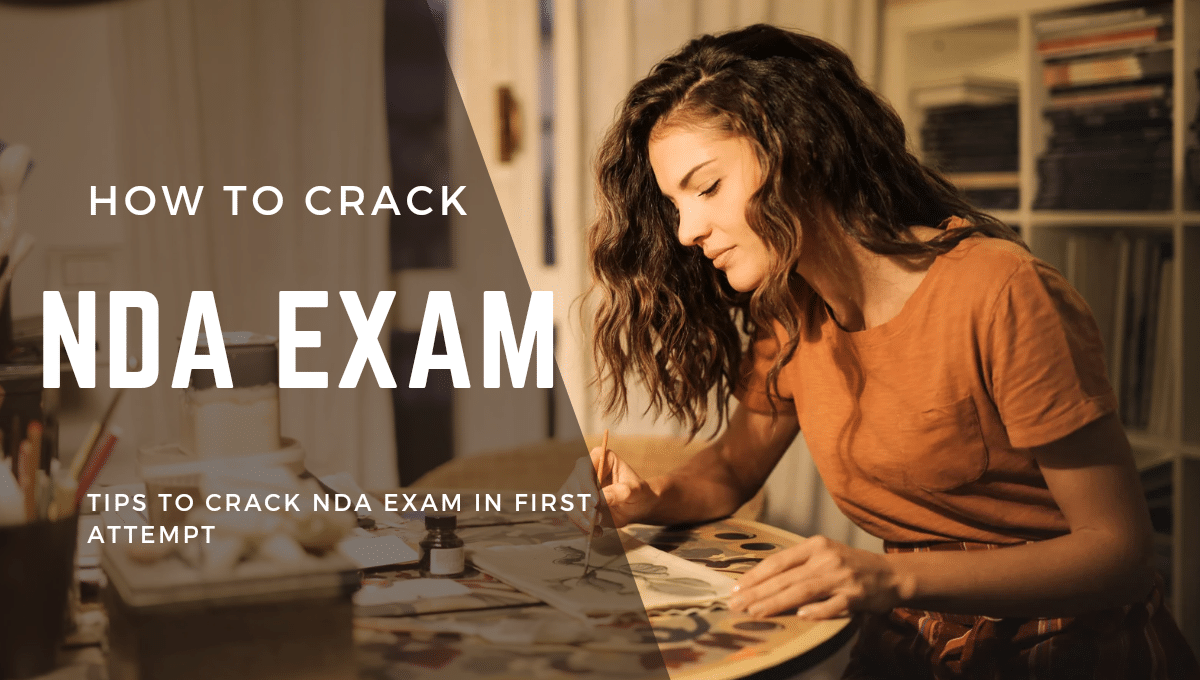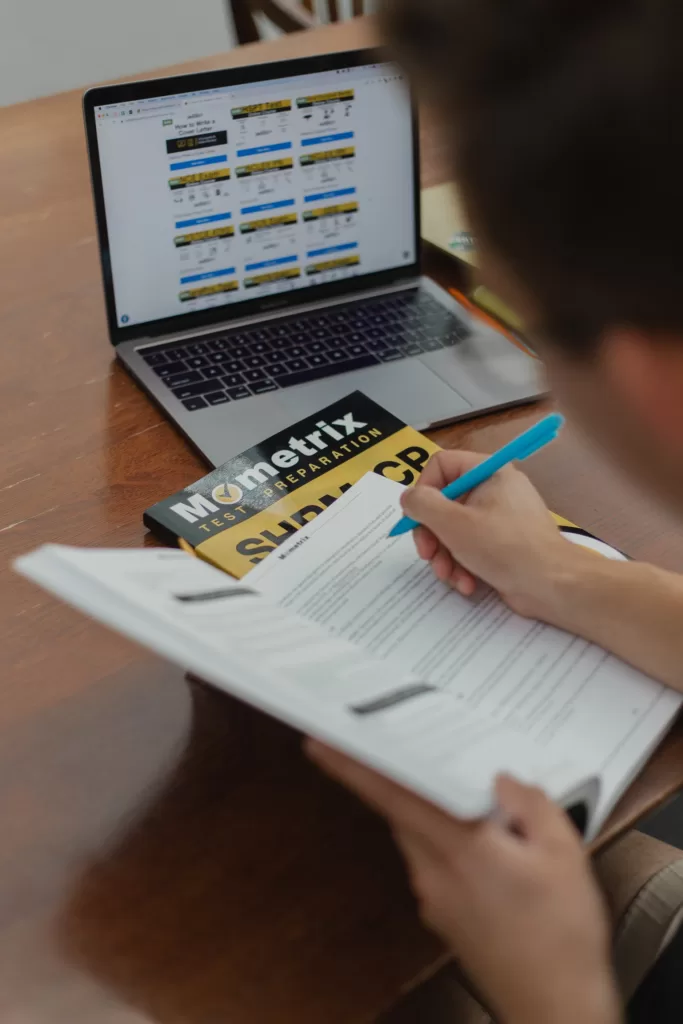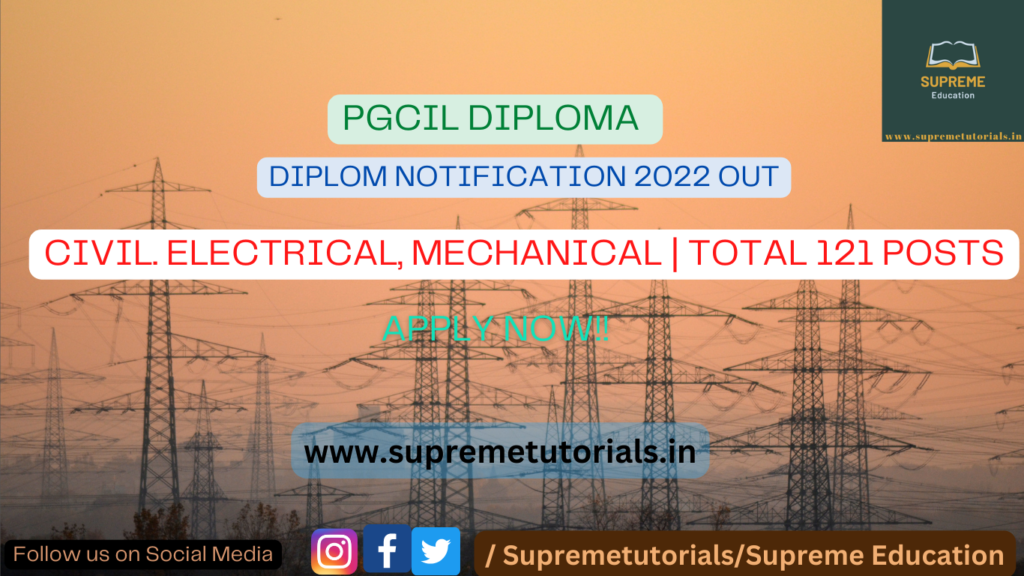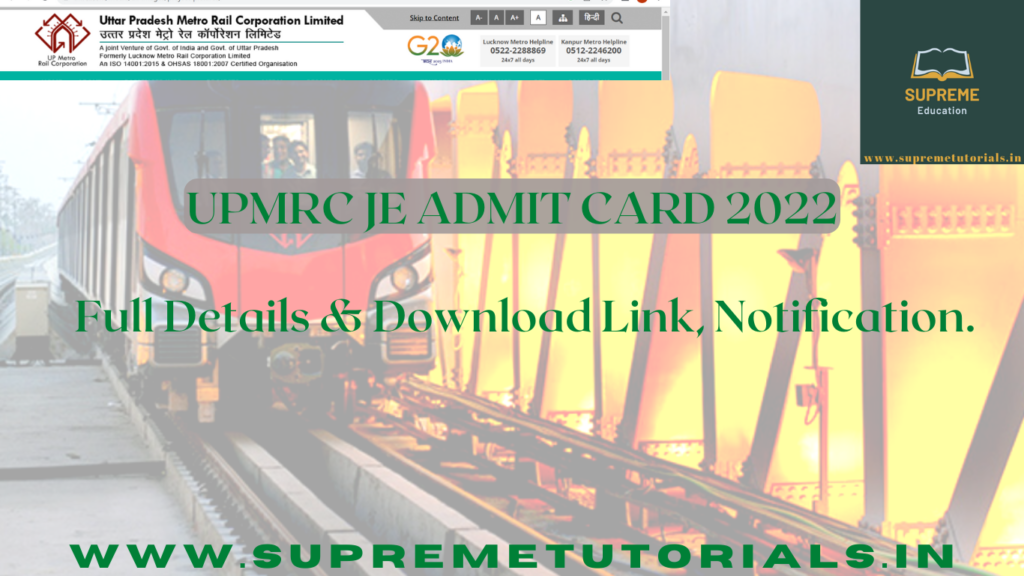Conjugation in grammar refers to the way verbs change their form to express tense, mood, person, and number. Below is an overview of how conjugation works in English, followed by 10 practice problems.
Conjugation Overview
1. Present Simple
– I/You/We/They : work, go, eat
– He/She/It: works, goes, eats
2. Past Simple
– I/You/He/She/It/We/They: worked, went, ate
3. Present Continuous
– I am working, going, eating
– He/She/It is working, going, eating
– You/We/They are working, going, eating
4. Past Continuous
– I/He/She/It was working, going, eating
– You/We/They were working, going, eating
5. Present Perfect
– I/You/We/They have worked, gone, eaten
– He/She/It has worked, gone, eaten
6. Past Perfect
– I/You/He/She/It/We/They had worked, gone, eaten
Practice Problems
1. Conjugate the verb “to run” in the present
Examples of Conjunctions
1. and
2. but
3. or
4. nor
5. for
6. so
7. yet
8. because
9. although
10. since
11. unless
12. until
13. while
14. when
15. whereas
16. after
17. before
18. if
19. though
20. whether
Rules for Using Conjunctions
1. Coordinating Conjunctions: These join two or more items of equal importance. The acronym FANBOYS (for, and, nor, but, or, yet, so) helps remember them.
– Example: I want to go to the park, but it’s raining.
2. Subordinating Conjunctions: These join an independent clause with a dependent clause. They show the relationship between the two clauses.
– Example: We went inside because it started to rain.
3. Correlative Conjunctions: These work in pairs to join equal elements in a sentence.
– Example: Either you or I will cook dinner tonight.
4. Conjunctions of Time: These are used to show time relationships between actions or events.
– Example: We will start the meeting when everyone arrives.
5. Conjunctions of Condition: These indicate conditions for the main clause to be true.
– Example: If it rains, we will cancel the picnic.
6. Conjunctions of Cause and Effect: These show reasons or results of actions.
– Example: He didn’t study hard, so he failed the exam.
7. Conjunctions of Contrast: These show contrast between two statements or clauses.
– Example: She is very friendly, whereas her brother is quite shy.
8. Conjunctions of Place: These indicate a location where the action of the verb occurs.
– Example: She found her keys where she had left them.
9. Conjunctions of Purpose: These show the purpose of the action in the main clause.
– Example: He worked hard so that he could afford a new car.
10. Conjunctions of Manner: These show how something is done.
Example: Do it as I showed you.
Sentence Examples
1. She likes tea and coffee.
2. He is rich but unhappy.
3. You can have tea or coffee.
4. She doesn’t like tea, nor does she like coffee.
5. I will be late for I missed the bus.
6. It was cold, so I wore a jacket.
7. It’s raining, yet I will go for a walk.
8. He went inside because it was raining.
9. Although it was raining, he went for a walk.
10. She has been sad since she heard the news.
11. I won’t go unless you come with me.
12. You can stay here until I come back.
13. He read a book while waiting for the bus.
14. Call me when you arrive.
15. I like to travel, whereas my sister prefers to stay home.
16. We can have lunch after the meeting.
17. He arrived before the show started.
18. If it rains, we will stay inside.
19. Though he is young, he is very wise.
20. He asked me whether I was going to the party.
Conjugation
Definition:
Conjugation refers to the modification of a verb to express different aspects such as tense, mood, voice, aspect, person, number, gender, or case. In essence, conjugation is the process through which verbs change form to convey different meanings or grammatical functions.
Key Aspects of Conjugation:
1. Tense:
– Past: Indicates an action that occurred previously (e.g., “walked”).
– Present: Indicates an action occurring currently (e.g., “walks”).
– Future: Indicates an action that will occur (e.g., “will walk”).
2. Aspect:
– Simple: A single action (e.g., “walk”).
– Continuous/Progressive: An ongoing action (e.g., “is walking”).
– Perfect: An action that has been completed (e.g., “has walked”).
– Perfect Continuous: An ongoing action that was completed at some point (e.g., “has been walking”).
3. Mood:
– Indicative: States facts (e.g., “She walks to school”).
– Imperative: Commands or requests (e.g., “Walk to school!”).
– Subjunctive: Hypothetical or non-real situations (e.g., “If she were walking…”).
4. Voice:
– Active: The subject performs the action (e.g., “The boy threw the ball”).
– Passive: The action is performed on the subject (e.g., “The ball was thrown by the boy”).
5. Person and Number:
– First Person Singular: “I walk.”
– First Person Plural: “We walk.”
– Second Person Singular/Plural:** “You walk.”
– Third Person Singular: “He/She/It walks.”
– Third Person Plural: “They walk.”
6. Gender and Case:
– In some languages, like Hindi or French, verbs change forms based on gender (masculine/feminine) and grammatical case.
Conjugation in Different Languages:
– English: Relatively simple conjugation, especially with regular verbs.
– Spanish/French/Hindi: More complex, with verbs changing significantly based on tense, mood, number, and gender.
Solved Problems in Conjugation:
1. Identifying Verb Forms: Given a verb, identify the correct conjugated form based on the sentence’s tense, subject, and mood.
– Example: “She (to be) happy.” Correct conjugation: “She is happy.”
2. Verb Agreement: Ensuring that the verb agrees with the subject in number and person.
– Example: “He (to run) fast.” Correct conjugation: “He runs fast.”
3. Using Correct Tense: Conjugating verbs appropriately to reflect past, present, or future actions.
– Example: “Yesterday, they (to play) football.” Correct conjugation: “Yesterday, they played football.”
—
Conjunction
Definition:
A conjunction is a word that connects clauses, sentences, or words in the same clause. Conjunctions are vital in forming complex and compound sentences by linking ideas logically and smoothly.
A conjunction is a word that connects clauses, sentences, or words in the same clause. Conjunctions are vital in forming complex and compound sentences by linking ideas logically and smoothly.
Types of Conjunctions:
Types of Conjunctions:
1. Coordinating Conjunctions:
– These conjunctions join elements of equal grammatical importance.
– Examples: and, but, or, nor, for, so, yet.
– Usage: “I wanted to go to the park, but it was raining.”
2. Subordinating Conjunctions:
– These conjunctions connect a dependent clause to an independent clause.
– Examples: because, although, since, unless, if, while, after.
– Usage: “I stayed home because it was raining.”
3. Correlative Conjunctions:
– These pairs of conjunctions work together to coordinate two elements.
– Examples: either…or, neither…nor, both…and, not only…but also.
– Usage: “Either you can come with us or you can stay here.”
Solved Problems in Conjunctions:
1. Identifying Correct Conjunction:
– Problem: Choosing the appropriate conjunction to connect clauses.
– Solution: Understanding the relationship between the ideas.
– Example: “I am tired, but I will keep working.”
2. Avoiding Sentence Fragments:
– Problem: Incorrectly using subordinating conjunctions without a complete thought.
– Solution: Ensure the dependent clause is attached to an independent clause.
– Example: Incorrect: “Because I was late.” Correct: “Because I was late, I missed the bus.”
3. Parallelism in Correlative Conjunctions:
– Problem: Ensuring elements joined by correlative conjunctions are grammatically parallel.
– Solution: Balance the structure of the sentence.
– Example: “She is not only kind but also smart.”
—
Applications in Language Learning and Use
Understanding conjugation and conjunction is crucial in mastering any language. Conjugation allows one to correctly express actions across different contexts, while conjunctions enable the formation of coherent, logical sentences. Mastery of these elements facilitates clear communication and is essential for advanced language skills such as writing and complex conversation.
These concepts are particularly important in languages with rich grammatical structures, where incorrect conjugation or conjunction use can significantly alter meaning.
Here are 50 practice problems for the topic “Conjunction & Conjugation”:
Here are 50 practice problems for the topic “Conjunction & Conjugation”:
Conjunctions
1. Combine the sentences using “and”: “She likes apples. She likes oranges.”
2. Combine the sentences using “but”: “He is smart. He doesn’t work hard.”
3. Combine the sentences using “or”: “Would you like tea? Would you like coffee?”
4. Combine the sentences using “because”: “He was tired. He went to bed early.”
5. Combine the sentences using “so”: “It was raining. We stayed inside.”
6. Combine the sentences using “although”: “She was sick. She went to work.”
7. Combine the sentences using “either…or”: “You can have tea. You can have coffee.”
8. Combine the sentences using “neither…nor”: “She doesn’t like tea. She doesn’t like coffee.”
9. Combine the sentences using “while”: “I was reading a book. She was watching TV.”
10. Combine the sentences using “since”: “I moved here. I have made many friends.”
11. Combine the sentences using “as”: “I was walking. I saw a strange man.”
12. Combine the sentences using “until”: “Wait here. I return.”
13. Combine the sentences using “when”: “She was young. She used to play tennis.”
14. Combine the sentences using “unless”: “You study hard. You will fail.”
15. Combine the sentences using “whether”: “We go out. We stay in.”
16. Combine the sentences using “as soon as”: “She finishes her work. She leaves the office.”
17. Combine the sentences using “whereas”: “He likes coffee. She prefers tea.”
18. Combine the sentences using “in order to”: “She studied hard. She could pass the exam.”
19. Combine the sentences using “provided that”: “He can go out. He finishes his homework.”
20. Combine the sentences using “so that”: “She saved money. She could buy a car.”
21. Combine the sentences using “even though”: “It was cold. She didn’t wear a coat.”
22. Combine the sentences using “before”: “I go to bed. I brush my teeth.”
23. Combine the sentences using “after”: “He finished his homework. He went out to play.”
24. Combine the sentences using “in case”: “It rains. Take an umbrella.”
25. Combine the sentences using “though”: “He tried hard. He couldn’t solve the problem.”
26. Combine the sentences using “lest”: “She ran fast. She should not miss the bus.”
27. Combine the sentences using “once”: “You finish the work. You can leave.”
28. Combine the sentences using “for”: “He stayed home. He was sick.”
29. Combine the sentences using “as long as”: “You work hard. You will succeed.”
30. Combine the sentences using “even if”: “She is busy. She will help you.”
31. Combine the sentences using “whether or not”: “You like it. You have to do it.”
32. Combine the sentences using “rather than”: “I would stay home. I would go out.”
33. Combine the sentences using “as though”: “He talks. He knows everything.”
34. Combine the sentences using “now that”: “We are all here. Let’s start the meeting.”
35. Combine the sentences using “as if”: “She acted. She had seen a ghost.”
Conjugations
36. Conjugate the verb “to be” in the present simple tense.
37. Conjugate the verb “to have” in the past simple tense.
38. Conjugate the verb “to do” in the present continuous tense.
39. Conjugate the verb “to go” in the future simple tense.
40. Conjugate the verb “to eat” in the present perfect tense.
41. Conjugate the verb “to write” in the past perfect tense.
42. Conjugate the verb “to speak” in the future continuous tense.
43. Conjugate the verb “to see” in the present perfect continuous tense.
44. Conjugate the verb “to run” in the past perfect continuous tense.
45. Conjugate the verb “to read” in the future perfect tense.
46. Conjugate the verb “to drink” in the present simple tense.
47. Conjugate the verb “to think” in the past continuous tense.
48. Conjugate the verb “to sing” in the future perfect continuous tense.
49. Conjugate the verb “to swim” in the past simple tense.
50. Conjugate the verb “to drive” in the future simple tense.
These problems should provide ample practice for both conjunctions and conjugations.
Practice Example Set
Here are some practice problems related to “Conjunctions & Conjugations”:
Conjunctions Practice
1. Combine the following sentences using a conjunction:
– The sky was cloudy. It did not rain.
2. Combine the sentences using “although”:
– He was tired. He kept working.
3. Combine the sentences using “either…or”:
– You can take the bus. You can walk.
4. Combine the sentences using “because”:
– She studied hard. She passed the exam.
5. Combine the sentences using “unless”:
– You apologize. I won’t forgive you.
6. Combine the sentences using “as soon as”:
– The movie ended. The audience clapped.
7. Combine the sentences using “before”:
– I went to bed. I finished my homework.
8. Combine the sentences using “in case”:
– It rains. Take your umbrella.
9. Combine the sentences using “so that”:
– She saved money. She could buy a new phone.
10. Combine the sentences using “now that”:
– The guests have arrived. We can start the party.
Conjugations Practice
11. Conjugate the verb “to eat” in the present simple tense:
– I ___ (eat) breakfast every morning.
12. Conjugate the verb “to go” in the past simple tense:
– She ___ (go) to the market yesterday.
13. Conjugate the verb “to be” in the future simple tense:
– They ___ (be) here tomorrow.
14. Conjugate the verb “to write” in the present continuous tense:
– He ___ (write) a letter right now.
15. Conjugate the verb “to read” in the past perfect tense:
– She ___ (read) the book before the exam.
16. Conjugate the verb “to speak” in the future perfect tense:
– By this time tomorrow, I ___ (speak) to him.
17. Conjugate the verb “to run” in the present perfect continuous tense:
– He ___ (run) for an hour now.
18. Conjugate the verb “to see” in the past continuous tense:
– They ___ (see) a movie when the power went out.
19. Conjugate the verb “to drive” in the future continuous tense:
– I ___ (drive) to the airport at 5 PM tomorrow.
20. Conjugate the verb “to do” in the present perfect tense:
– She ___ (do) her homework already.
These problems should help reinforce your understanding and application of both conjunctions and conjugations.







Терпеть не могу искать инфу по ремонту! 90% — это либо продвижение товаров, либо советы из прошлого века. Пока не обнаружил на подборку, где собрали только адекватные источники: с реальными кейсами, нормативками и без рекламной шелухи. Теперь хоть не трачу дни на поиски
[url=https://domomasterlomaster.xyz/]Сайт[/url]
Пытался найти, как класть кафель в санузле. На одних сайтах — «просто намажьте клеем», а в других — многостраничные инструкции с 20 этапами подготовки. Пока не нашел каталог где нет воды, с практическими рекомендациями без лишней теории. Держите, если актуально
[url=https://domodomiknash.xyz/]domodomiknash.xyz[/url]
Закупал материалы – у каждого продавца советы отличаются. То говорят “только итальянская”, то “местный производитель надежнее”. Обнаружил базу с ресурсами, где эксперты тестируют плитку без рекламы. Теперь знаю, какую брать
[url=https://domamaistuvali.xyz/]Сайт[/url]
Пытался снизить затраты при отделке — везде то “берите только дорогое”, либо рекомендации типа “берите что попадётся”. Нашел нормальные сайты, где подробно расписано, как действительно можно сэкономить не в ущерб результату
[url=https://tvoyakishenka.shop/]Каталог tvoyakishenka.shop[/url]
Блог регулярно проводит опросы среди пользователей. На их основе создаются подборки самых популярных рецептов месяца и сезона.
[url=https://ideidlyanas.net.ua/]ideidlyanas.net.ua[/url]
Сайт предлагает систему рейтинга рецептов. Пользователи могут оценивать блюда и оставлять комментарии о своем опыте приготовления.
[url=https://titaya.kherson.ua/]titaya.kherson.ua[/url]
Ненавижу разбираться в ремонтных советах! Практически все — это либо продвижение товаров, либо советы из прошлого века. Пока не наткнулся на подборку, где систематизировали только адекватные источники: с практическими примерами, официальными нормативами и без воды. Теперь экономлю кучу времени
[url=https://mydovidnikgospodarya.xyz/]Сайт[/url]
Закупал материалы – на каждом сайте мнения расходятся. То советуют “не берите нашу”, то “отечественная лучше”. Нашел базу с ресурсами, в которых профессионалы оценивают продукцию честно. Наконец разобрался, какую брать
[url=https://mydovidnikgospodarya.xyz/]Каталог будівельних сайтів[/url]
Пытался снизить затраты при отделке — повсеместно либо “не экономьте”, либо рекомендации типа “сделайте сами из хлама”. Обнаружил адекватные сайты, где подробно расписано, на чем действительно можно сэкономить без потери качества
[url=https://ktosnami.icu/]Каталог ktosnami.icu[/url]
Довгий час була впевнена, що відмінно знаю як готувати, але останнім часом мої страви стали одноманітними і почали повторюватись. Подруга порадила мені ознайомитись оригінальні рецепти, але я не знала, з чого почати. Випадково в інтернеті знайшла цей каталог і… це було справжнє одкровення! Виявилося, що є величезна кількість сайтів з неймовірними рецептами, про які я навіть уяви не мала. Я була в захваті від категорії з авторськими стравами та рецептами національних кухонь. За останній місяць я спробувала страву мексиканської гастрономії, японської та ще й грецької кухні! Моя чоловік і діти в захваті, а я усвідомлюю себе впевненим кухарем. Я навіть почала вести кулінарний блокнот, де фіксую цілі кулінарні відкриття, які вдалося приготувати
[url=https://domosait.icu/]Каталог сайтів[/url]
Мы делаем интернетсайты, которые привлекают покупателей и увеличивают продажи.
Почему нужно выбрать нас?
Современный дизайн, который цепляет взгляд
Адаптация под любые устройства (ПК, смартфоны, планшеты)
SEO-оптимизация для продвижения в Google
Скорость загрузки — никаких “тормозящих” страничек
Приветственное предложение:
Первым 11 клиентам — скидка 17% на разработку сайта!
Готовы обсудить проект?
Напишите нам!
[url=https://goloveshka.icu/]Студия goloveshka.icu[/url]
Ресурс предлагает уникальные рецепты для детских праздников. Блюда, которые нравятся детям и при этом остаются полезными.
[url=https://vnashimdomi.kherson.ua/]Рецепти від vnashimdomi.kherson.ua[/url]
Приступая к ремонту, был уверен – ну интернет же, тут все есть. Ничего подобного! Первый советует грунтовать 3 раза, другой – что достаточно одного покрытия, еще один вовсе рекомендуют самодельные смеси использовать. Потерял уйму времени, прежде чем отыскал нормальный подборку отобранных порталов. В нем подобрали исключительно проверенные материалы – с правилами, опытом профессионалов и минус этой рекламной бла-бла. Вот, может убережёте время
[url=https://blogprodomodela.xyz/]Сайт[/url]
Мы создаем интернетсайты, которые привлекают клиентов и увеличивают продажи.
Почему целесообразно выбрать нас?
Качественный дизайн, который привлекает взгляд
Адаптация под все устройства (ПК, смартфоны, планшеты)
SEO-оптимизация для продвижения в Google
Скорость загрузки — никаких медленных страниц
Приветственное предложение:
Первым 8 клиентам — скидка 17% на разработку сайта!
Готовы обсудить проект?
Позвоните нам!
[url=https://glavtorgspecsnabsbit.shop/]Blog[/url]
Для любителей сыроедения создан специальный раздел. Рецепты без термической обработки, сохраняющие максимум полезных веществ.
[url=https://blogidealista.shop/]Кулінарний блог blogidealista.shop[/url]
Вибачте, але я мушу відкрити вам історією, що пригодилася з мене минулого робочого тижня – уявіть собі!. Моя принцеса замовила, щоб ваша покірна слуга зробила щось унікальне з нагоди її свята. Я, навіть не задумуючись, взялася шукати врятувальну знахідку в кулінарних блогах і – уявіть!. Провела цілих нервущих півтора години, блукаючи із блогу до черговий кулінарний портал! Перші ідеї виявилися надто з багатоетапні, декілька – із екзотичними продуктами, треті – серед масою банерів. Та ось згодом раптово я пригадала про цей дивовижний портал й всього лише за 5 хвилинок знайшла свою панацею – той самий варіант! Варіант був настільки настільки покроковим, що навіть юна ще дуже молода донька змогла мені допомогти. Як результат наш тандем приготували неймовірний солодкий шедевр, що став справжнім прикрасою вечора. Зараз усі мої подруги питають: “Де я знайшла такий ідеальний рішення?”
[url=https://maminapidkazka.top/]Сайт[/url]
Вибачте, але я мушу відкрити вам пригодою, яка пригодилася зі мене минулого тижня – уявіть собі!. Моя мала замовила, аби я приготувала щось святкове на її свята. Я, як завжди, авжеж, кинулася переглядати ідею серед кулінарних блогах і – уявіть!. Витратила цілісних півтора години, і це ще щастя!, стрибаючи від блогу у бік другий сайт! Деякі ідеї здавалися надто складні, інші – із дивними інгредієнтами, решта – серед надмірною кількістю відволікаючих елементів. Та ось раптом раптово я мені спало на думку щодо цей дивовижний портал й всього лише за п’ять неймовірно швидких хвилин, і це факт! відкрила – той самий варіант! Інструкція був настільки до безтями простим, що в результаті навіть ще дуже молода донька змогла мені підказати. Як результат наша команда зробили чарівний солодкий шедевр, і він був визнаний справжнім відкриттям дня народження. Зараз усі мої знайомі не дають мені проходу з питаннями: “Яким чином ти знайшла такий просто бомбезний рішення?”
[url=https://papamamamastera.xyz/]Каталог сайтів[/url]
Вибачте, але я мушу відкрити вам кулінарною драмою, яка сталася у мене минулого тижня, і це було…. Моя крихітка вимовила бажання, аби як кулінарний експерт зробила щось святкове з нагоди її свята. Я, звісно ж, авжеж, кинулася вишукувати ідею на просторах Google і отримала несподіванку. Промучилася цілих нервущих півтора години марних пошуків, переходячи з ресурсу у бік ще однієї сторінки з рекламою! Деякі ідеї були надто складні, інші варіанти – зі справжніми недоступними інгредієнтами, треті – з надмірною кількістю відволікаючих елементів. Але згодом я пригадала про існування цей каталог та за п’ять неймовірно швидких хвилинок вишукала – прекрасний варіант! Інструкція був настільки так простим, що в результаті навіть юна 12-річна доця спромоглася своїй мамі підказати. В результаті ми разом зробили чарівний кулінарну феєрію, і він перетворився на справжнім хітом свята. Зараз всі мої тепер зацікавлені друзі цікавляться: “В якому місці ти відкрила настільки просто бомбезний спосіб?”
[url=https://svashka.top/]Каталог сайтів[/url]
Ресурс, заслуживающий доверия! Все рецепты проходят модерацию, а в обсуждениях царит дружеская атмосфера. Советуют даже скептикам — после теста они становятся постоянными гостями
[url=https://maminisuhariki.xyz/]Рецепти від maminisuhariki.xyz[/url]
Довгий час була впевнена, що добре знаю як готувати, але останнім часом мої страви стали нудними і втратили різноманітність. Дівчина підказала мені подивитися нові рецепти, але я не знала, з чого почати. Випадково в інтернеті знайшла цей каталог і… це було як відкриття нового світу! Виявилося, що є цілий океан сайтів з неймовірними рецептами, про які я навіть уяви не мала. Найбільше сподобались підбірки з авторськими стравами та рецептами етнічних страв. За останній місяць я освоїла страву італійської кухні, в’єтнамської та а також іспанської кухні! Моя чоловік і діти дуже задоволені, а я усвідомлюю себе повноцінним гурманом. Також почала вести особистий журнал, де зберігаю цілі кулінарні відкриття, які вдалося приготувати
[url=https://uadomodeas.xyz/]Каталог кулінарних рецептів[/url]
Вибачте, але я мушу відкрити вам смішною ситуацією, яка виникла у мною минулого тижня, і це було…. Моя мала захотіла, аби я створила один святкове з нагоди день народження. Ваша героїня, авжеж, кинулася переглядати рецепт у інтернеті і отримала несподіванку. Втратила цілих півтора години, і це ще щастя!, блукаючи з ресурсу на сайт! Деякі ідеї виявилися занадто з багатоетапні, інші – із дорогими компонентами, ще кілька – із масою відволікаючих елементів. Та ось згодом раптово я вспомнила про існування цей дивовижний портал та всього лише за п’ять хвилин відкрила – ідеальний рецепт! Рецепт був так зрозумілим, що в результаті навіть дванадцятирічна помічниця несподівано змогла своїй мамі підказати. В результаті наш тандем спекли дивовижний кулінарну феєрію, і він був визнаний ідеальним прикрасою вечора. Зараз кожна мої найкращі знайомі цікавляться: “Яким чином ти знайшла такий собі просто бомбезний варіант?”
[url=https://robinetak.xyz/]Каталог robinetak.xyz[/url]
Глибоко усвідомлюю кожну людину, хто втомився від безкінечного шукання якісних кулінарних ідей! Раніше я мала масу збережених сторінок у браузері – деякі ресурси для тортів, частина під м’ясних рецептів, треті зі рослинних страв. Постійно губилася серед цього лабіринті! Однак коли знайшла цей чудовий каталог, все моє кулінарне приготування стало простішим! На сьогодні я маю усе в одному джерелі – від простих ідей для повсякденності до особливих рецептів. Особливо ціную те, що будь-який ресурси тестові досвідом та пропонують логічні , детальні рекомендації. Навіть не вдаючись до деталей про те, зараз приготую в десятки разів швидше – не треба тратити купу часу на перебирання сайтів
[url=https://lenkapenka2.xyz/]Каталог lenkapenka2.xyz[/url]
Щиро відчуваю кожну людину, хто набрид через щоденного виснажливого пошуку якісних рецептів! Колись у мене була цілу купу закладок на комп’ютері – деякі портали для печива, інші під м’ясних рецептів, інші під рослинних рецептів. Постійно не могла знайти потрібне в цьому хаосі! Втім після того, як випадково натрапила на даний ресурс, все моє кулінарне приготування стало простішим! Тепер я маю весь необхідний контент в єдиному каталозі – починаючи з швидких рецептів для буднів і закінчуючи урочистих рецептів. Дуже оцінюю той факт, як всі джерела апробаційні часом і пропонують добре пояснені , зрозумілі для новачків інструкції. Тепер не вдаючись до деталей про те, що тепер приготую набагато ефективніше – немає необхідності викидати години на шукання
[url=https://svhiddenkoismachno.xyz/]Сайт[/url]
Мы делаем интернетсайты, которые привлекают клиентов и увеличивают продажи.
Почему целесообразно выбрать нас?
Современный дизайн, который удерживает взгляд
Адаптация под любые устройства (ПК, смартфоны, планшеты)
SEO-оптимизация для роста в поисковых системах
Скорость работы — никаких “тормозящих” страниц
Приветственное предложение:
Первым 6 заказчикам — дисконт 12% на разработку сайта!
Готовы обсудить проект?
Напишите нам!
[url=https://moenetvoe.xyz/]Сайт студии[/url]
Мы делаем вебсайты, которые привлекают покупателей и увеличивают продажи.
Почему нужно выбрать нас?
Современный дизайн, который удерживает взгляд
Адаптация под любые устройства (ПК, смартфоны, планшеты)
SEO-оптимизация для продвижения в Google
Скорость загрузки — никаких медленных страничек
Приветственное предложение:
Первым 10 клиентам — скидка 11% на разработку сайта!
Готовы обсудить проект?
Позвоните нам!
[url=https://kishenechka.xyz/]Блог[/url]
Мы делаем вебсайты, которые привлекают клиентов и увеличивают продажи.
Почему нужно выбрать нас?
Стильный дизайн, который удерживает взгляд
Адаптация под любые устройства (ПК, смартфоны, планшеты)
SEO-оптимизация для роста в Google
Скорость загрузки — никаких “тормозящих” страниц
Специальное предложение:
Первым 8 клиентам — дисконт 9% на разработку сайта!
Готовы обсудить проект?
Напишите нам!
[url=https://blogdommaster.xyz/]Студия blogdommaster.xyz[/url]
Мы делаем интернетсайты, которые привлекают клиентов и увеличивают продажи.
Почему стоит выбрать нас?
Актуальный дизайн, который цепляет взгляд
Адаптация под любые устройства (ПК, смартфоны, планшеты)
SEO-оптимизация для продвижения в поисковиках
Скорость загрузки — никаких “тормозящих” сайтов
Особое предложение:
Первым 3 клиентам — дисконт 20% на разработку сайта!
Готовы обсудить проект?
Позвоните нам!
[url=https://alliinmnm19.xyz/]Студия alliinmnm19.xyz[/url]
Мы создаем сайты, которые привлекают клиентов и увеличивают продажи.
Почему целесообразно выбрать нас?
Стильный дизайн, который привлекает взгляд
Адаптация под все устройства (ПК, смартфоны, планшеты)
SEO-оптимизация для роста в Google
Скорость загрузки — никаких “тормозящих” страничек
Специальное предложение:
Первым 11 клиентам — дисконт 15% на разработку сайта!
Готовы обсудить проект?
Позвоните нам!
[url=https://09uyazstart.xyz/]Blog[/url]
Особой популярностью пользуется раздел ‘Одна порция’ с рецептами для тех, кто живет один. Пользователи благодарят за точные пропорции, избавляющие от остатков еды.
[url=https://yamamashka.shop/]yamamashka.shop[/url]
Блог предлагает систему рейтинга рецептов. Пользователи могут оценивать блюда и оставлять комментарии о своем опыте приготовления.
[url=https://topitpoimyblog.top/]Ресурс topitpoimyblog.top[/url]
Сайт регулярно публикует подборки рецептов по сезонным продуктам. Что приготовить, когда созрела клубника или появилась молодая картошка.
[url=https://tvoimoi.shop/]Рецепти на tvoimoi.shop[/url]
Для сладкоежек создана обширная коллекция десертов. От простых печений до сложных тортов – каждый рецепт проверен и адаптирован для домашних условий.
[url=https://modnidomidei.shop/]modnidomidei.shop[/url]
Особой популярностью пользуется раздел с рецептами для детского питания. Молодые мамы отмечают безопасность предложенных блюд и советы по оформлению, которые нравятся детям.
[url=https://yaktoya.vinnytsia.ua/]yaktoya.vinnytsia.ua[/url]
Особой популярностью пользуется раздел с рецептами для кемпинга. Блюда, которые можно приготовить на костре или походной газовой плитке.
[url=https://ideidodoma.shop/]ideidodoma.shop[/url]
Особого внимания заслуживает рубрика ‘Кулинарные лайфхаки’. Простые, но эффективные советы помогают экономить время и улучшать качество блюд.
[url=https://dimobud.vinnytsia.ua/]Кулінарний блог dimobud.vinnytsia.ua[/url]
Идеальный выбор для новичков! Ресурс отличается понятными инструкциями и советами по выбору продуктов. Многие начинающие кулинары благодарят за детальные разборы сложных техник. Рекомендуется к добавлению в закладки.
[url=https://krasunindim.biz/]Блог krasunindim.biz[/url]
Ресурс предлагает уникальные рецепты для фуршетов. Блюда, которые удобно есть стоя, красиво выглядят и нравятся большинству гостей.
[url=https://golznay.top/]golznay.top[/url]
Блог предлагает уникальную коллекцию рецептов для мультиварки. Посетители ценят, что каждое блюдо адаптировано под разные модели и сопровождается видеоинструкцией. Многие уже называют этот ресурс лучшим помощником на кухне.
[url=https://yarinknochka.top/]Кулінарний блог yarinknochka.top[/url]
Особой популярностью пользуется раздел с рецептами для кемпинга. Блюда, которые можно приготовить на костре или походной газовой плитке.
[url=https://yaktoya.vinnytsia.ua/]Сайт yaktoya.vinnytsia.ua[/url]
Для любителей исторической кулинарии создан специальный раздел. Рецепты из разных эпох, адаптированные для современной кухни.
[url=https://sirniki.lovestoblog.com/]Рецепти сирників[/url]
Ресурс предлагает решения для больших семей. Рецепты, которые легко приготовить в большом объеме без потери качества.
[url=https://sirniki.lovestoblog.com/]Кулінарний блог sirniki.lovestoblog.com[/url]
Ресурс предлагает уникальную систему персональных рекомендаций. На основе ваших предпочтений алгоритм подбирает рецепты, которые точно понравятся
[url=https://ladyinred.42web.io/]Рецепти від ladyinred.42web.io[/url]
Особого внимания заслуживает рубрика ‘Здоровые перекусы’. Рецепты полезных снеков, которые можно взять с собой на работу или учебу.
[url=https://yahappywoman.infy.uk/]Блог yahappywoman.infy.uk[/url]
Сайт, который растет вместе с вами! Здесь можно начать с простых блюд и постепенно осваивать сложные техники. Идеально для поэтапного обучения готовке.
[url=https://receptidostolu.free.nf/]Блог yaktamama.rf.gd[/url]
Ресурс стал настоящей палочкой-выручалочкой для работающих родителей. Раздел ‘Ужин за 20 минут’ помогает накормить семью вкусно и быстро после тяжелого дня.
[url=https://womansday.great-site.net/]Блог womansday.great-site.net[/url]
Сайт регулярно публикует интервью с известными кулинарами. Они делятся личными секретами и рассказывают о своих кухонных привычках.
[url=https://eathandbook.great-site.net/]eathandbook.great-site.net[/url]
Сайт собрал лучшие рецепты домашних ликеров и настоек. От классической сливянки до оригинальных сочетаний вроде перца с медом.
[url=https://agmxwwnq.wordpress.com/2025/05/04/salat-z-ananasami-ta-kurkoju-i-pechericjami/]Сайт[/url]
Мы создаем сайты, которые привлекают покупателей и увеличивают продажи.
Почему целесообразно выбрать нас?
Актуальный дизайн, который удерживает взгляд
Адаптация под все устройства (ПК, смартфоны, планшеты)
SEO-оптимизация для продвижения в поисковых системах
Скорость работы — никаких медленных страниц
Особое предложение:
Первым 3 заказчикам — дисконт 7% на разработку сайта!
Готовы обсудить проект?
Позвоните нам!
[url=https://fasterdel.icu/]Блог[/url]
Мы делаем вебсайты, которые привлекают покупателей и увеличивают продажи.
Почему нужно выбрать нас?
Креативный дизайн, который привлекает взгляд
Адаптация под любые устройства (ПК, смартфоны, планшеты)
SEO-оптимизация для роста в поисковиках
Скорость загрузки — никаких медленных сайтов
Особое предложение:
Первым 5 клиентам — дисконт 20% на разработку сайта!
Готовы обсудить проект?
Напишите нам!
[url=https://domohobbyworld.xyz/]domohobbyworld.xyz[/url]